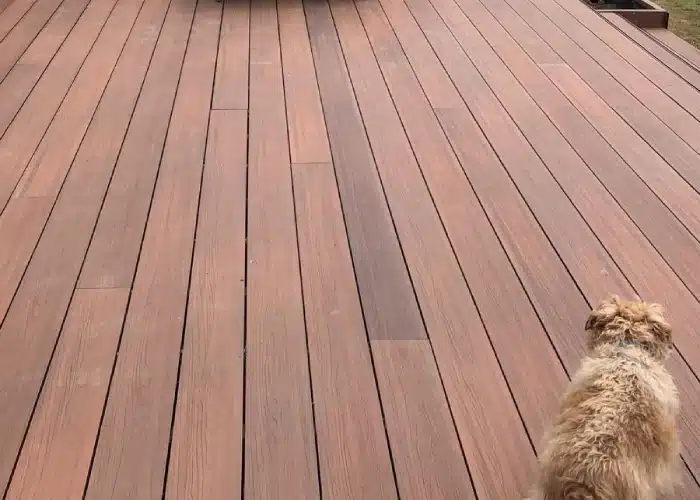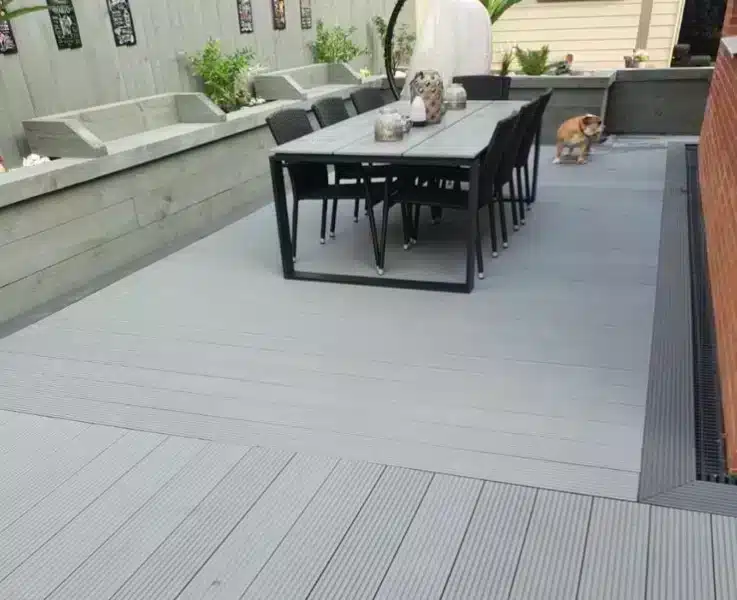How To Lay Wooden Decking Tiles on Grass
Anyone who has the experience and knowledge can build decking. However, it can be quite difficult for beginners. You’ll need to decide what materials to use, where to build it, and what type of fasteners to use, among other things. As someone who’s building decking, you might have asked; should decking boards be installed crown up or down? In this article, we will answer this question and cover why it is important.
What Is a Crown Decking Board?
To understand better, let’s briefly talk about timber crowns first. Crowning and cupping occurs in timber decking boards due to moisture absorption. The boards warp width-ways, causing the middle of the board to rise from the edges (crowning) or for the edges of the board to rise from the middle (cupping) depending on how you look at it.
To detail this more, when wood or timber is harvested, the timber’s quality depends on how close it is to the centre of the log and how it is cut. Decking is produced from various parts of the tree, depending on type of decking you pick. From research we understand that timber decking mainly sold in the U.K. is a flat grain board and sometimes a mix of different types of cuts, for example the most expensive timber are the ones from the centre of the logs, also known as the pith of the tree. If you wanted a pith or edge grain board, this can be challenging to find when searching, read on for more details in relation to this.
Type Of Cuts From The Tree
Flat grain boards are timber decking boards that have been cut parallel to the growth rings of the tree. On the other hand, edge grain timber is cut perpendicular to the growth rings of the tree. Edge grain timber offers enhanced durability and strength in comparison to flat grain boards.
When the timber is cut, the boards are flat and uniform. However, the change in moisture may cause the boards to slightly warp. You can expect this change in shape when using flat grain boards. As for edge grain boards, there is very little chance for them to warp and bend.
So, when getting decking boards, your best bet is to get materials closest to the centre of the log, if possible, as these are stronger and more durable. If not, you’ll want to get edge grain boards, as there is less chance of warping occurring with these boards. You can still work with flat grain boards if you know which side you should install facing downwards.
Most timber decking boards are a mixture of edge grain boards and flat grain boards. The reason for this being, timber decking boards are cut from smaller trees, the trees are not big enough to cut boards that are specifically edge grain or flat grain. You may be able to find boards cut from specific parts of the tree for hardwoods, as hardwood trees tend to be thicker, therefore, they are big enough to cut specific boards, for example edge grain boards.
Should You Install Crown Up or Crown Down?
When working with most decking boards, you must install the boards properly. As mentioned above most decking boards sold in the U.K. are flat grain boards and only hardwood can you really purchase the different types mentioned and discuss within this article, for example edge grain. So most of us will be using a flat grain when installing our decking, the question is, should you install boards with crowning at the top? And why is it important?
When installing the boards, you will want to install the crown up. However, the bend or the crowning is not always noticeable. To see which direction the boards is crowning, you can look at the edge of the boards. If the grain forms smile-shaped lines, the top of the board is likely to have a crowned surface. If the board has not crowned, these lines indicate which side would crown if it were to occur.

It is highly important to install the boards crown up due to the natural shape of the boards, installing the boards crown up allows for water/snow to run off the boards. Do not install the boards with the crowns down (cupped up), it’s a recipe for disaster. Instead of water/snow moving away from the boards, it will more likely accumulate on the boards post-installation.
Remember to install all the boards crown up for this reason, as water pooling can result in splintering and rotting further down the line.
Other Alternatives
Since crowning or cupping is more common in timber flat grain boards, you may want to use other materials instead. As previously mentioned, you can use edge grain boards to prevent this problem for occurring, but again this is mainly sold in hardwood decking. Aside from this, you can also consider getting capped composite decking.

Capped composite decking boards have a film of protection against moisture, minimising warping. Composite decking boards do expand and contract, but not as much as wood. Pressure treated wooden decking boards are more durable alternatives to untreated softwood as they are treated with chemicals to prolong their lifespan. You can also use sealants on your wooden boards after you install them. This helps prevent the boards from absorbing moisture. One issue with this alternative is that once you seal your timber decking, you will need to reapply it every so often to renew the effects.
Conclusion
To conclude, you should always install timber decking boards crown up. This will prevent water pooling on your deck, water pooling on timber decking will cause the timber decking to deteriorate in strength quicker, resulting in a shorter deck lifespan, therefore it is imperative to prevent this. To steer clear of this problem all together, you may wish to install composite decking. This decking material is resistant to warping, meaning it is highly unlikely you will encounter this problem
Small Garden Ideas Without Grass




